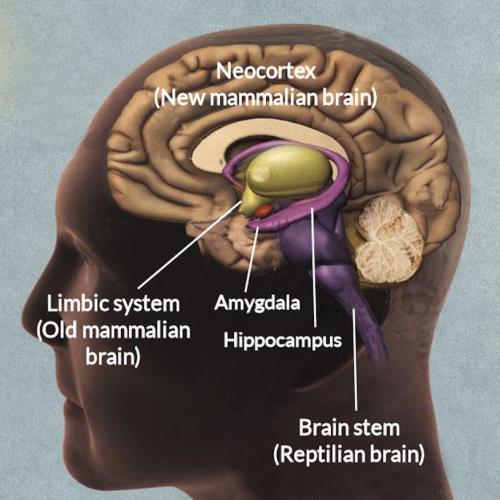
How Do You Make Decisions? (Part 3 of 4)
How do we actually make decisions, and do BI tools support our processes?
- By Barry Devlin
- June 2, 2016
As discussed in Part 1 Part 2 of this series, any true-to-life model of business decision making must embrace more than rational choice as a basis. The questions that arise, therefore, are: How do we actually make decisions, and how do BI tools imagine we do?
The answers require that we understand something of the workings of the mind, especially the indissoluble link between mind and body. In the context of decision making and, indeed, all mental activity, thoughts drive emotional/chemical responses in the body and vice versa.
Making a decision, whether in business or in our personal lives, clearly begins with information from the real world, and this has long been recognized in BI. This information is the basis of the initial impetus to make a decision -- the recognition that something is not as we might wish. What is overlooked in BI is that this recognition triggers a set of deeply seated reactions that impact the brain long before any rational thought occurs.
The nature and strength of this impact actually depends less on the information received than on a range of internal processes. These processes are best understood with a simple model of the brain/body complex used by some neurobiologists.

Figure 1: The Triune Brain (Credit: Wikipedia/ Sparkie82)
The triune model of the brain, shown in Figure 1, identifies three increasingly sophisticated areas and levels of functioning within the brain. First, the "reptile brain," located directly atop the spinal column, is responsible for survival. Fight-or-flight reactions arise here instantaneously whenever we feel threatened and, depending on our level of psychological integration, may be both unconscious and irresistible.
In the case of business decisions, our physical survival is seldom truly threatened, of course, so this first reaction may be overblown. When the sales manager first sees the poor results of his department, his bonus -- and survival -- is threatened. His instinct is to fight; he verbally abuses his weakest performer in a show of strength.
The second level, the "old mammalian" or limbic brain, resides deep in the center of the brain and brings us the ability to feel emotions. The limbic brain is slower and more nuanced than the reptile brain: simplistically, if something feels "good," we seek it out; if "bad," we withdraw from it. Such feelings are intimately linked to types of memory that emerge here -- facts, specific experiences, and the emotions that give color and texture to our experiences. The emotional hardwiring to be social creatures also resides here, a part of our mammalian heritage.
Thus, the sales manager may feel compassion for his staff in the face of poor results, knowing that their bonuses are also at risk. He cares for them as if they are members of his family.
Both these areas are directly connected to the body, both influencing its chemistry and being influenced by it. Physical fatigue, excitement, and ongoing physiological stress, for example, all produce chemical changes in the body that affect the brain. Meanwhile, persistent thought patterns can also create chemical conditions in the body.
Much of this happens beneath our awareness; reactions and actions occur before any reasoning can take place. Despite the emphasis we place on rational behavior, these subliminal functions have long formed an integral part of human functioning and decision making. They still do, in both positive and negative ways.
Reasoning occurs in the third area of the brain at the top and front of the skull (the neocortex), the most sophisticated level of functioning. Here we find left-brain logical/rational thinking, including numerical and verbal skills, as well as right-brain intuitive/integrative thinking, which is the basis of innovation. Here also is the seat of self-awareness and social skills such as consideration and empathy.
When our sales manager acts from this level of the brain, he can create a plan to address the shortfall in results and motivate his team to improve. Intention plays a key role here. It is often easier to react or emote than to move to reason, particularly when we are triggered -- when some aspect of the current situation unconsciously reactivates an old memory, behavior, or trauma.
(For further explanation of the triune brain and its application to human behavior, see Mindsight: The New Science of Personal Transformation by Daniel Siegel, clinical professor of psychiatry at UCLA School of Medicine.)
The path from information received to decision and action is lengthy to describe, but actually takes place near-instantaneously. As described, there are many potential impediments to getting to the rational level. However, the current approach to business decision making assumes we move directly from information input to reasoning. It misses entirely the intervening reptile and mammalian levels of human brain function.
We recognize the reality of our brain function in some contexts, for example, when we advise taking a reflective pause before sending a flaming response to an email that announces job losses in our department. We even acknowledge human instinctive responses in marketing when we use images of babies to influence buying decisions. An integrated approach to business decision making should also encompass this full range of mental activity.
In short, today's BI tools don't support the full scope of decision making. We need a new model that includes the other aspects of human behavior: intent, emotion, and gut feel at personal and interpersonal levels. This model is the topic of Part 4.
About the Author
Dr. Barry Devlin is among the foremost authorities on business insight and one of the founders of data warehousing in 1988. With over 40 years of IT experience, including 20 years with IBM as a Distinguished Engineer, he is a widely respected analyst, consultant, lecturer, and author of “Data Warehouse -- from Architecture to Implementation" and "Business unIntelligence--Insight and Innovation beyond Analytics and Big Data" as well as numerous white papers. As founder and principal of 9sight Consulting, Devlin develops new architectural models and provides international, strategic thought leadership from Cornwall. His latest book, "Cloud Data Warehousing, Volume I: Architecting Data Warehouse, Lakehouse, Mesh, and Fabric," is now available.